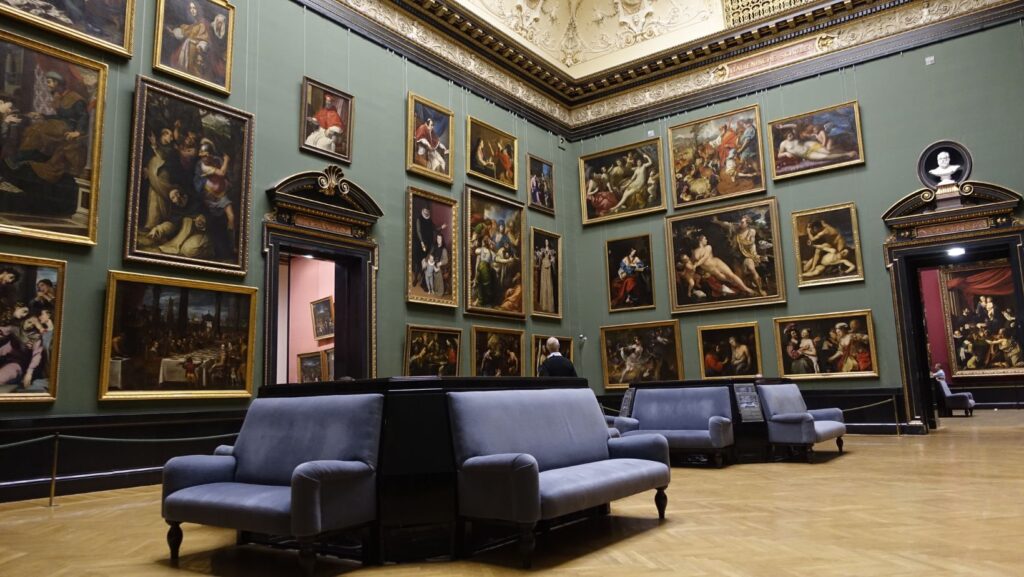The-Art-World Art Galleries
In the vibrant tapestry of the art world, galleries play a pivotal role as both sanctuaries for creativity and platforms for emerging talent.  These spaces, often nestled in bustling urban centers or quaint neighborhood corners, serve as bridges between artists and audiences, offering a glimpse into the diverse expressions of human imagination. Art galleries not only showcase the work of established masters but also champion the voices of avant-garde creators pushing the boundaries of traditional art forms.
These spaces, often nestled in bustling urban centers or quaint neighborhood corners, serve as bridges between artists and audiences, offering a glimpse into the diverse expressions of human imagination. Art galleries not only showcase the work of established masters but also champion the voices of avant-garde creators pushing the boundaries of traditional art forms.
As cultural hubs, galleries foster a dynamic dialogue between art enthusiasts and creators, nurturing a community where ideas and inspiration flow freely. They are instrumental in shaping art trends, influencing collectors, and guiding the market’s pulse. Whether you’re a seasoned collector or a curious newcomer, stepping into an art gallery offers an immersive experience that captivates the senses and sparks the imagination. The allure of these curated spaces lies in their ability to transform mere moments into lasting impressions.
Understanding The Art World Art Galleries
Art galleries play a critical role in the art ecosystem. They act as intermediaries between artists and collectors, facilitating sales and providing exposure to emerging talents. Galleries curate exhibitions that can elevate an unknown artist to international prominence. By  hosting diverse exhibitions, they attract a broad audience and foster appreciation for varied artistic expressions.
hosting diverse exhibitions, they attract a broad audience and foster appreciation for varied artistic expressions.
Placement in an art gallery often signifies an artist’s credibility. Galleries meticulously select artworks to align with their thematic focus and market demand. This selection process helps artists gain recognition and attract both private and institutional collectors.
Art galleries also contribute to cultural dialogues. Hosting events, such as artist talks and panel discussions, they create a forum for critical discourse around contemporary issues reflected in art. Such interactions enrich the cultural experience and elevate public understanding of art’s evolving narratives.
The Role Of Art Galleries In The Art World
Art galleries play a pivotal role in shaping the art landscape. They bridge the gap between artists, collectors, and the public.
Curating Exhibitions
Curating exhibitions involves selecting artworks that align with a gallery’s vision. It requires identifying pieces that resonate with current cultural and market trends. Galleries often focus on creating thematic or artist-focused shows. These curated exhibitions draw in diverse audiences by offering a cohesive narrative. For instance, a gallery may showcase abstract art to highlight particular stylistic techniques or historical periods. Through curation, galleries educate viewers, influence tastes, and elevate artists in the public eye.
Supporting Emerging Artists
Supporting emerging artists is a key function of galleries. They provide platforms for new talents to present their work. Galleries often feature exhibitions that spotlight up-and-coming artists, giving them initial exposure they might not otherwise receive. By investing time and resources, galleries help nurture these artists’ careers. They connect emerging talents with potential buyers, critics, and other stakeholders in the art world. This support can elevate an artist’s profile and create opportunities for further success on a global stage.
Types Of Art Galleries
Art galleries play a crucial role in the art world by offering various platforms for artists to showcase their work. They range from traditional spaces to innovative digital environments.
Commercial Galleries
Commercial galleries operate with a profit-driven model by selling artworks directly to collectors and art enthusiasts. They typically  represent a roster of artists, promoting their work and handling sales transactions. Exhibitions are organized with the intention to generate interest and drive sales. Well-known commercial galleries often have an established client base and a considerable influence on market trends.
represent a roster of artists, promoting their work and handling sales transactions. Exhibitions are organized with the intention to generate interest and drive sales. Well-known commercial galleries often have an established client base and a considerable influence on market trends.
Non-profit galleries focus on education and cultural enrichment rather than sales. Supported by grants and donations, they often spotlight experimental, socially relevant, and avant-garde art. These galleries seek to make art accessible to a broader audience through free or low-cost events. They emphasize community engagement by hosting workshops, lectures, and artist residencies.
Online galleries offer a digital platform for displaying and selling art, reaching a global audience. These virtual spaces eliminate geographical constraints, making art accessible anywhere. Artists gain exposure to a vast audience without the costs associated with physical galleries. Online galleries can incorporate interactive features such as virtual tours and 3D viewings, enhancing the viewer’s experience.

